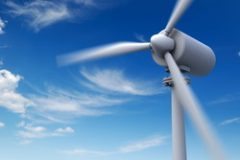Smart power delivery system
The smart network will set up a virtuous cycle for distributed generators and energy storage devices. It will grow the market by opening up more niches where distributed energy is economically competitive. This growth will lead to economies of scale that decrease costs, making distributed energy economical in yet wider applications.

A rule of thumb is that every time production quantities double the cost per unit decreases by around 20%.
Thus the smart energy network will help reduce costs and break down market barriers for generation technologies such as solar photovoltaics, fuel cells and microturbines, and new energy storage technologies such as reversible fuel cells.
By making it easy to connect and coordinate distributed energy resources, the smart network will make it more practical to serve local needs with local generation. This will provide lower-cost alternatives to beefing up substations and power lines in high-growth areas. Large “virtual power plants” composed of many networked small generators could take demands off long-distance transmission lines.
Utilities including Pacific Gas & Electric and Ontario Hydro have uncovered a major savings potential resulting from distributed energy and its ability to avoid traditional grid investments. But turning this innovative concept into standard business practice will require changes in business cultures and regulatory frameworks. A new marketplace for grid upgrades must be created.
Today utilities make long-range plans to upgrade delivery networks and then execute those plans, often with little systematic exploration of potentially cheaper alternatives.
In a smart energy scenario, distribution and transmission system operators publicize upgrade plans and budgets.
They challenge the marketplace to meet those needs through less expensive means. That provides an incentive for aggregators to bid packages of distributed resources, demand management and building efficiency improvements. The smart energy network’s capacity to seamlessly integrate technologies reduces the costs of assembling such packages, making this new marketplace feasible.
Regulatory reforms will provide investor-owned utilities with incentives to promote innovative alternatives to traditional upgrades. Utilities guaranteed a rate of return based on capital investment have less incentive to reduce infrastructure investments or have the need met by third parties. Setting rates of return on the basis of services performed motivates utilities to economize on capital investment.
One cost-cutting incentive for distributed resources is their ability to offer capacity increases that closely track demand growth. Meeting increasing demands by adding central plants and new lines inevitably brings large “lumps” of new capacity on line at once. This system typically moves in boom-and-bust fashion from starvation to surfeit and back to starvation.
Because they come in small pieces, distributed resources entail less commitment to technologies that might later be outcompeted in the marketplace. By reducing financial risks of
big investments, distributed resources also can lead to big financial paybacks.
Shaving just one percent off average interest rates would reduce the power infrastructure bill $11 billion by 2020.

Distributed resources also cut costs by allaying siting problems that increasingly plague the electrical industry. Gaining approval for big transmission lines is notoriously difficult.
Small-scale power plants also require less environmental review and are far less likely to arouse not-in-mybackyard resistance.
The smart energy network could make it easier for owners of distributed generators to sell surplus power. While 36 states have enacted net metering laws that require utilities to take surplus power from small generators, in most cases the amount is capped well below 1 MW.10 Utilities generally are the market for surplus production, and many have set up institutional barriers.
With the smart network in place, small generator operators would have a range of potential buyers for surplus, including neighboring buildings and aggregators.
Reference: The Smart Energy Network: Electricity’s Third Great Revolution By Patrick Mazza








Sir,
having small doubt that for a generator,
Can be exciter stator poles and main stator poles are equal or not.